Little Giants from the Death Camp
The Ovitz family came to Auschwitz because of their height and ethnicity. His mother’s precept helped him survive: to stick together and love each other in trouble and joy
Natalia VOLKOVA
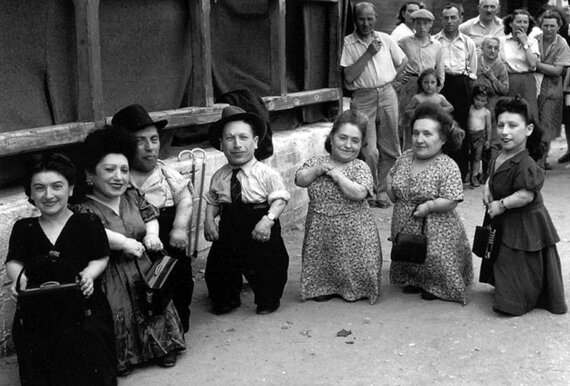
Her name was Pearl, which means “pearl.” She was the youngest of her small siblings who made it through Auschwitz and survived. In one of her interviews, Pearl Ovitz said:
“If anyone ever asks me why I was born a dwarf, I would have to say: My peculiarity is God’s way of keeping me alive.”
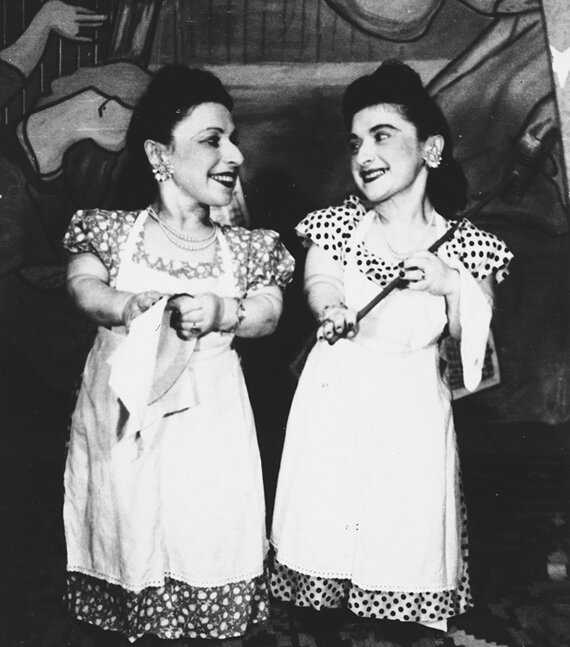
Perla and Elizabeth Ovitz
A small husband, two big wives and ten children of different heights
The story of the Ovitz family began in the Romanian village of Rozavlea, where in 1868 an unusual boy was born, who was named Samson. Or Shimshon in the Jewish way. His unusualness manifested itself in childhood – he did not grow like everyone else, and remained small in stature.
Pseudoachondroplasia is the name given to Shimshon’s disease by modern researchers. But to put it simply, it is dwarfism, which is inherited.
What could a little man do in a Romanian village? He became a jester, an entertainer at weddings, that is, a badhen. It is said that in addition to jokes, he also preached moral sermons – this was not forbidden.
Shimshon was married twice, and to women of ordinary height. His first wife, Branagh, bore him two daughters, Rosica and Francesca. They both grew up like their father. Eight more children were born from the marriage with Bertha: Avram, Freida, Miki, Elizabeth, Pearl were small, Sarah, Leah and Arya did not inherit their father’s ailment.
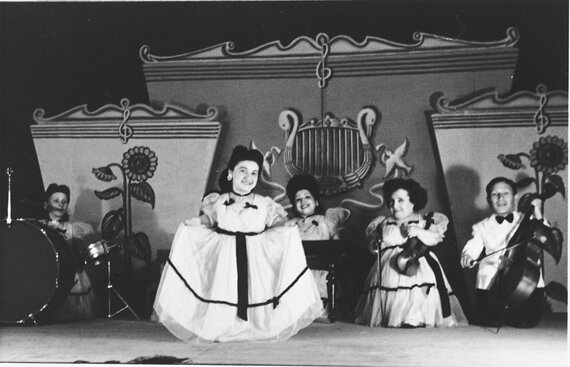
Hopes Little Orchestra
At the age of 46, Shimshon died of food poisoning, leaving Bertha with ten children. Apparently, this woman was smart and strong – she figured out how to provide non-standard offspring with a profession: she sent them to study musicians and klezmer.
Violin, cello, guitar, accordion, cymbals, drums – this is what the younger Ovitsa learned to play. Especially for young musicians, the instruments have been reduced.
Before her death, Bertha bequeathed her children to stay together for the rest of their lives — and this saved them, as it turned out.
Only one of the brothers, who separated from his family, died, but more on that later.
In Europe, the little ones mainly performed as comedians and circus performers, but the Ovitzes occupied a vacant niche, became a real musical group, and began to be called the “Lilliputian Troupe”. In the 1930s and 1940s, they toured Romania, Hungary, and Czechoslovakia and enjoyed great popularity. They sang in Yiddish, Hungarian, Romanian, German and even Russian!
And they were not separated: when one of the brothers and sisters got married, the spouse was part of the Ovitz family and became part of the team. Things were going well for them – the Ovitzes, the first in the whole area, had their own car. They sang, brought up children—they had people of normal stature—and they didn’t expect any trouble. Hitler, however, had already come to power.
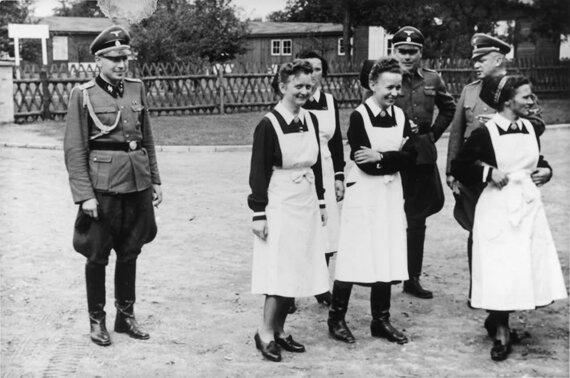
33-year-old Dr. Josef Mengele with his collaborators in Auschwitz.
And on Saturdays, they celebrated the Sabbath
When the Nazis went to war in Europe in 1939, the Ovitzes were still touring unhindered – there was not a word in their documents that they were Jewish. This saved them, because the persecution of the Jews had already begun.
They performed until the spring of 1944 and secretly observed Jewish traditions, such as never scheduling concerts on the Sabbath because they were sick, and celebrating Shabbat. But when Hungary was occupied by the Nazis, they could no longer hide the secret of their blood – they were forbidden to perform, yellow stars appeared on the clothes of the little musicians.
In May 1944, 12 members of the Ovitz family were on a train to Auschwitz. One of the brothers escaped, separated from his family, and was caught and killed.
The rest of the Ovitzs arrived at the camp and met the Angel of Death, the nickname given to Josef Mengele, the doctor who conducted inhumane experiments on Auschwitz prisoners. Tens of thousands of innocent people fell victim to it.
Mengele met every train of arriving prisoners at Auschwitz and personally selected his guinea pigs. He also saw a family of little people. Mengele demanded that the little ones not be sent to the gas chambers, but in the general chaos and confusion, the Ovitzes did get there.
Naked, like the rest of the prisoners, they were herded into cells. “When the metal door slammed shut heavily behind us, it began to smell of gas,” Pearl Ovitz later recalled. “But suddenly we heard cries of ‘Dwarfs, where are my dwarfs?’ We were freed, but we didn’t know that even greater horror awaited us.”
Cinema for Hitler and Experiments on People
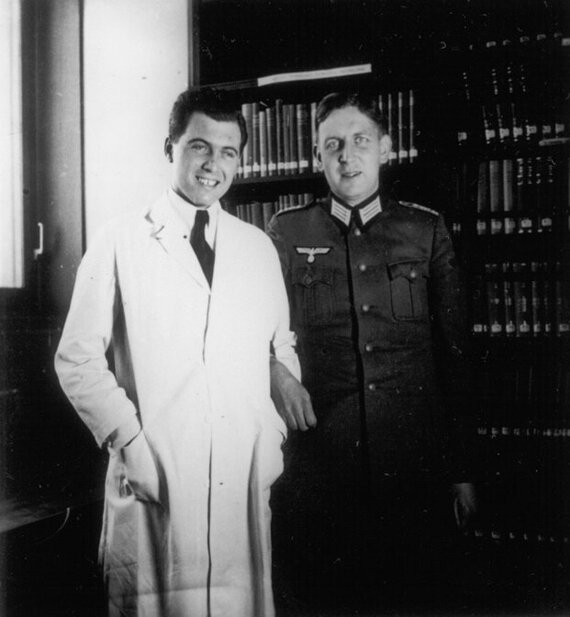
Josef Mengele with a colleague at the Kaiser Wilhelm Institute for Anthropology, Human Genetics and Eugenics. Late 1930s.
Dr. Mengele came to pick up the little ones personally – he wondered why there were people in the same family with and without dwarfism. He ordered Ovitsov to be placed in special barracks. And I started experimenting.
Large quantities of blood and bone marrow were taken from the Ovitses, their teeth and hair were pulled out, they were exposed to radioactive radiation, infected with various diseases, placed in ice and hot water, and blinded for a while with the help of some drops. Women were tormented by gynecologists by injecting scalding fluid into their uterus…
One day, the little ones saw that two more Lilliputians had arrived at the camp, and they were ordered to be killed, boiled, and the skeletons displayed in the museum.
According to Pearl’s recollections, Mengele had a devilish charm. “Dr. Mengele was like a movie star, only more handsome. But no one who saw it could have imagined what kind of monster was hiding behind that beautiful face. We all knew that he was ruthless and prone to the most extreme forms of sadism – when he was angry, he would go into hysterics and shake with rage.”
The sheep had to obey Mengele in everything and entertain him with jokes and their songs, pose for a film that the doctor made especially for Hitler. As Pearl recalled, he called Ovitz after the names of the seven dwarfs from the Disney cartoon, which was drawn by Art Babbitt.
The mood after meetings with the little ones of the monstrous doctor was always excellent. As Pearl said, “If he came into our barracks in a bad mood, he would immediately calm down. When he was in high spirits, people would say, ‘He must have gone to the little ones.'”
The “special treatment” helped the Ovitzes save another family besides their own. Together with them, their neighbor Simon Schlomowitz and his relatives, ten people in all, went to Auschwitz. Schlomowitz told Mengele that they were all relatives of the Ovitz family (although all the Szlomovitz were of normal height) and the Ovitzes confirmed this. This is how the Shlomowitz family was saved.
One and all
When it became clear to the Nazis that the war would soon be over, and not in their favor, the prisoners of Auschwitz began to be liquidated as a matter of urgency. The Ovitsy were doomed to wait for their turn, but January 1945 came, and on the 27th the Russians broke into the camp. This is how the musicians’ family was saved. She was the only family to survive Auschwitz.
After the liberation, Ovitsy lived in a Soviet refugee camp, then they were released and walked to their native village. For seven months they traveled in a large caravan, still not parting. Then, together, we moved to Antwerp, and then, a few years later, to Israel.
In Haifa, they began to give concerts again — and again began to gather full halls. Ovitsa’s program was changed: missing their native places, they no longer sang songs, but acted out small plays from the life of the Jewish shtetl. In 1955, the family left the stage.
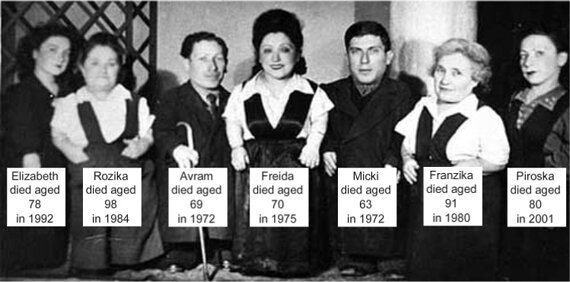
There is not a single Ovitz alive who survived the Atzschwitz. All the brothers and sisters lie in the same section of the family cemetery.
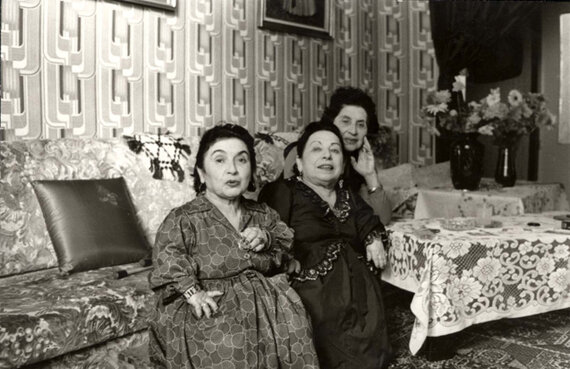
Haifa, Israel. Sarah, Perla, and Elizabeth Ovitz.
Pearl Ovitz was the last to die, in 2001, when she was in her 80s. She, like her other relatives at different times, told about the amazing history of her family. A book about the Sheep has been published abroad, it is called “In Our Hearts We Were Giants”. It was written by Yehuda Koren and Eilat Negev.
